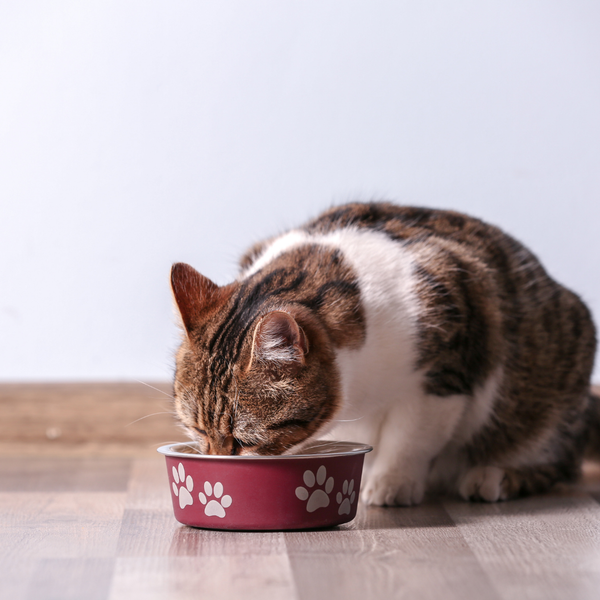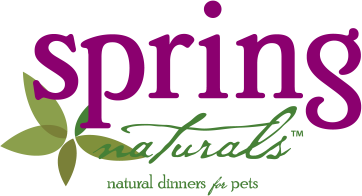
How To Measure Portion Sizes When Feeding Your Cat or Dog
(Dr. Iulia Mihai, DVM) Our pets are more than just animals to us; they are family members. As such, we want the best for them to ensure a healthy life and to stay with us as long as possible.
The most important aspect of their care is proper nutrition. Everything starts with nutrition. If a pet does not have a proper diet, they can get sick. As a result, measuring portions correctly and choosing a balanced diet play a crucial role in preventing health problems. The most common health problems that arise due to an unhealthy diet are obesity and malnutrition.
In this article, you will learn how to measure your cat or dog's portion correctly and how to adjust it according to the specific needs of your pet.
1. The Importance Of Measuring Your Pet's Portions
Your pet’s balanced and healthy diet results from the quality of the food and the correct measurement of the portions. If you feed your pet in excess, they may become obese. An obese pet will also have joint problems because the body must carry more weight. On the other hand, an incorrect diet can lead to decreased immunity, malnutrition, breathing problems, weakening of muscles and bones, and reduced energy levels (obese pets are sedentary). In addition, obesity can lead to chronic life-threatening conditions such as diabetes and heart disease. For these reasons, it is important to measure the portions of your dog or cat correctly and adjust the amount of food you’re offering according to their needs.
2. Factors That Influence Your Pet's Portion Size
Several factors influence your dog or cat’s nutritional needs, including their portion size. Therefore, before you determine your pet’s portion size, here’s what you need to consider:
Your pet's age – Young pets use more energy and have a faster metabolism than senior pets. As a result, they will need more calories and nutrients to support their growth and development. On the other hand, older pets have a slower metabolism. Because they do not use as much energy, they will have reduced calorie needs.
Your pet's weight – Underweight dogs and cats need larger portions to reach their ideal weight. Contrarily, overweight pets will need smaller portions to lose weight and reach their ideal weight.
Your pet's health condition – Some diseases can influence a pet’s nutritional needs. For example, if your dog or cat suffers from liver problems or food allergies, your veterinarian will recommend special diets for these conditions.
Your pet's activity level – Sedentary pets will need fewer calories than active ones. Therefore, if your dog is very active, you take them for walks daily, play with them constantly, run around, etc., they will need more calories than a pet that stays indoors all day and sleeps.
3. How To Correctly Measure Your Pet's Portion Size
Let’s talk first about the different food types as the measuring method may vary, depending on the type of food we choose.
Dry food – This type of food is more concentrated in terms of calories. So, the portions should be smaller compared to wet food. It is also important to always respect the amount indicated on the package for the weight of your dog or cat.
Wet food – This type of food contains more water, having fewer calories. As a result, the recommended amounts will be higher than with dry food.
Raw food – In this case, it is best to talk to a veterinarian or a veterinary nutritionist because the amounts are calculated according to the weight of the pet. In addition, a balanced diet that contains all the necessary vitamins and minerals is needed.
Moreover, most pet food manufacturers list on the label how many grams to feed your pet based on their weight. This way, not only will you feed your dog or cat correctly, but you can adjust the food based on the weight you want them to reach. For example, if your dog or cat is obese, choose to feed the portion size in grams indicated for the weight you want your pet to reach (not the one they have) – let's say your cat is 13 lbs. (~6 kg), choose the portion size in grams for 8.81 lbs. (~4 kg), if 4 kg is the ideal weight for your cat's size and breed.
Measuring the correct portions of our pets can be done in several ways. Here are the most common methods for measuring your pet’s food portion:
Measuring cup – A measuring cup is one of the easiest ways to measure your pet's food. Even though most pet food packaging comes with feeding instructions, a measuring cup is essential for weighing. The instructions are general. Therefore, you must take into account the factors we presented previously (age, health, activity level, etc.) for a correct portioning.
Kitchen scale – For more accurate weighing, you can use a kitchen scale. This tool will help you avoid overfeeding. Additionally, if you have a pet with special needs, a kitchen scale will help you feed them exactly as your vet recommended.
Food storage containers – These products not only help store your pet's food but can also be used to portion out their food. They are often marked with lines or come with a measuring scoop to avoid the risk of giving too little or too much.
4. How To Adjust The Portions According To Your Dog's Or Cat's Needs
Now you know how to correctly measure the food portion of your pet, but there are still some aspects that need to be taken into account to be able to adjust the amount accordingly. Here is what you should pay attention to:
Your pet’s weight – Monitoring their weight is essential because you will need to adjust the portion size if your dog or cat starts to weigh more or less.
Signs of obesity – Obesity can manifest through: weight gain, a swollen abdomen, lack of energy, getting tired easily, and being sedentary. If you notice these signs, it is important to reduce the portion size. In addition, you need to talk to your veterinarian to establish a proper feeding plan for your pet's needs.
Your pet’s behavior and appetite – There are cases when your pet does not like the food you offer and eats less than usual. In this case, gradually change your pet's food with something more palatable. In addition, there are cases when your dog or cat may remain hungry; in this situation, you should adjust their portion. If your pet leaves leftovers in the food bowl, the portion may be too large. Nevertheless, it is best to monitor these signs and adjust the portion accordingly.
5. Preventing Common Mistakes In Feeding Your Pet
To keep your pet at an ideal weight, it is important to avoid some common mistakes such as:
Free feeding – It gives your pet unlimited access to food throughout the day. This is contraindicated for dogs – adult dogs should have two meals a day at set times. Cats usually consume up to 10 small meals a day in the wild. When we keep them as pets, they don't have to hunt to eat (an activity that requires energy). Therefore, feeding 2 or 3, even 4 small meals per day is sufficient. Others say that elderly cats should eat one meal per day. Free feeding can be beneficial for cats that need to maintain their weight. Without self-control, it can encourage overeating and obesity.
Offering too many treats – It can lead to obesity and other health problems. Opt for healthy choices and make sure they don't exceed 10% of your pet's daily calorie intake.
Iuliana graduated from the University of Agronomical Sciences and Veterinary Medicine in 2012, Romania. She has a Master’s degree in Small Animal and Equines Pathology and a strong affinity for Veterinary Parasitology and Laboratory. In 2013 she started her Ph.D. in epithelial cancer in dogs and cats. She volunteered at the faculty’s clinic in her 3rd year of study, and continued her career in small animal pathology and laboratory. She has one cat and eleven rats. Her interests outside of work include traveling, writing, and crafting.

Post a Comment!